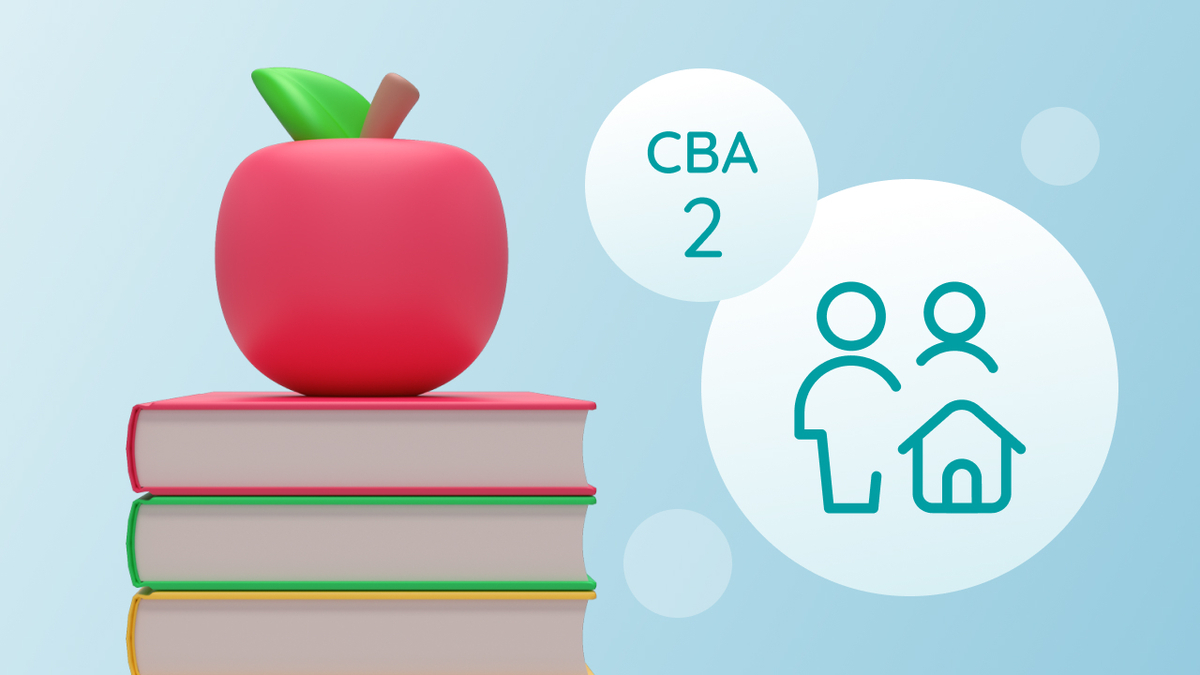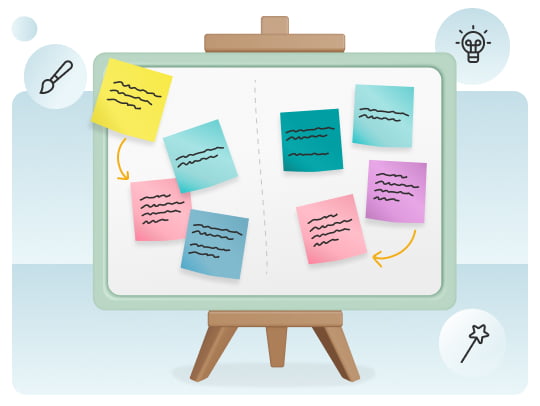Don't forget to follow @thehomeecroom on Twitter & Instagram for Updates :-)
How it works:
Email [email protected] a pdf copy of your resource (specify if the resource is JC, LC, LCA, TY etc.)
I will add the resources to the share space (all work will be credited to it's rightful owner/mastermind)
I will email you an access link to gain access to the share space, this link will grant you full access to download all resources shared in TheHomeEcRoom Share Space :-)
If you would like to add resources to TheHomeEcRoom Share Space , please email a pdf version of your resource to [email protected]
#sharedlearning

Junior Cycle Shared Resources:
Junior Cycle Home Economics Information for Students (J.Kelly)
Exit Cards (N.Mannion)
Home Economics Tasters (N.Martin/L.Galvin)
Assessment Resources:
Home Economics Skills Challenge 1 (C.McKenna)
Home Economics Skills Challenge 2 (C.McKenna)
JC Home Economics Movie Assessment (C.McKenna)
JC Home Economics Success Criteria Generator (C.McKenna)
The Sewing Machine Retrieval Practice (C.McKenna)
Textiles Project (K.Ryan)
My Dream Bedroom Project (K.Ryan)
Tasty Time-lapse Practical Assessment (C.McKenna)
Mystery Box Challenge (M.McLoughlin)
Year 1 Craft Project (N.Mannion)
Assessments Folder (L.Galvin)
CBA 2 Research Booklet (C.Hopper)
CBA 2 Task 1,2 & 3 (R.Langton)
CBA 2 Booklet (E.Murphy)
Introduction to Nutrition (K.O'Keeffe)
Nutrition (the 6 nutrients) (J.Murray)
Protein Worksheet (K.O'Keeffe)
Fats & Fats Comparisons (M.Hough)
Micronutrients (revision) (L.Byrnes)
Functions & Sources Card Match Activity (E.McEniff)
Minerals Revision (C.Ward)
Minerals Project (N.Kernohan)
Water (E.Quirke)
Water (C.McEntee)
Energy (K.O'Keeffe)
Nutrients Mindmap (S.Yore)
The Food Pyramid.Health Hazards etc. (K.O'Keeffe)
Health Hazards (C.Ring)
Healthy Eating Revision (C.McDonnell)
Maintaining a Healthy Weight (E.O'Meara)
Planning and Healthy Lunch (S.Mangan)
Balanced Eating (C. Casey)
Balanced Diet Mind Map (G.Regan)
Diet Through the Lifecycle (G.Regan)
Dietary & Food Requirements (F.Broderick)
Human Digestion | Enzymes (L.Horkan)
Food Safety Case Studies (K.Keegan)
Home Baking Worksheets (A.Cowan)
Meat Presentation (O.Glennon)
Meat & Fish Revision Sheet (M.O'Dea)
Milk & Milk Products (R.Harney)
Milk, Milk Products & Eggs Revision Sheet (M.O'Dea)
Milk Brainstorm (N.Feeney)
Milk Worksheet (M.Hough)
Cheese Presentation (F.Barry)
Cheese Summary (U.Downey)
Yogurt Summary (U.Downey)
Eggs Summary (U.Downey)
Eggs Brainstorm (N.Feeney)
Fruit & Vegetables (S.Byrne)
Veg Brainstorm (N.Feeney)
Cereals (R.Egan)
Cereals Worksheet (M.Leonard)
Raising Agents (O.Glennon)
Breakfast Cereals Research Task (L.Corkery)
Food Labelling Research Task (L.Corkery)
Food Sustainability (A.Diver)
Food Waste Project (C.McKenna)
Sweet Deception (sugar project) (C.McKenna)
Food Miles Project (C.McKenna)
Sustainable Meal Planning Challenge (L.Carey)
Obesity (C.Gibbons)
Special Diets Worksheet (L.Byrnes)
Special Diets Worksheet (E.O'Meara)
Special Diets Assessment (unit of learning) (T.Martyn)
Diet Related Disease (S.Garnett)
Responsible Life Choices (drugs/alcohol/smoking) (K.Gallagher)
Vegetarian Diets (S.Byrne)
Human Digestion Graphic Organiser (C.McKenna)
Human Digestion Revision (M.O'Dea)
Wellbeing Check Ins (L.O'Hara)
Personal Hygiene (K.O'Keeffe)
The Skin (worksheet) (J.Murray)
Personal Hygiene and the Skin (J.Logan Lane)
The Teeth (R.Sweeney)
Introduction to Consumer Studies (J.Murray)
The Consumer (R.Harney)
The Consumer (M.O'Connor)
Consumer Studies Exam Q's (L.Grehan)
Decision Making (R.Harney)
Advertising (S.O'Leary)
Advertising and Marketing Mind Map (G.Regan)
Money Management (K.Monahan)
Design in the Home (D.Cleary)
The Family (presentation) (R.Harney)
The Family Assessment (unit of learning) (T.Martyn)
Textile Sustainability Lesson 1 (C.McKenna)
Textile Sustainability Lesson 2 (C.McKenna)
Fast Fashion Worksheet (M.O'Dea)
The Fashion Industry (J.Logan Lane)
Textiles & Fibres (L.O'Neill)
Fibres - Cotton & Wool Production (N.Corcoran)
The Sewing Machine x3 lessons (C.McKenna)
Sewing Machine Handout (N.Mannion)
Fabric Embellishment (L.O'Neill)
Sewing Skills (N.Mannion)
Sewing Skills & Embellishment (L.Stewart)
Hand & Machine Sewing Skills (L.Stewart)
Hand Sewing Skills (L.O'Neill)
Tacking & Running (A.Brosnan)
Blanket Stitch Recap (A.Brosnan)
World Map of Stitches (basic hand sewing project) (C.McKenna)
Introduction to the Sewing Copy (G.Boyce)
Practical Tasks (Recipes) (L.Corkery/L.O'Neill/M.Clarke/O.Smith/N.Tully/A.Brosnan/A.Whyte/M.Duffy/C.Maher/N.Kennedy/S.Ni Bhriain/S.Collins/N.Feeney/O.Hickey/C.Maher/R.Sweeney/J. Logan Lane/L.Fitz/A.Keane)
Practical Tasks (videos) A.Keane
Practical Skills (M.Clarke/S.O'Leary/S.Collins/O.Doyle/E.O'Meara/K.Ryan)
Practical Peer Feedback/Assessment (L.Gallagher)
Level 2 Learning:
Practical Tasks - banana pancakes (S.Lynch)
Practical Tasks - pitta pizza (S.Lynch)
Queen Cakes (N.Kelleher)
Transition Year
Special Diets (L.Mentane)
New Food Product Development Project (C.McKenna)
Nutrition and Health Blogs (C.McKenna)
Breakfasts (M.O'Dea)
Snacking (M.O'Dea)
Healthy Eating Module (M.O'Dea)
Practical Tasks (recipes) (A.Brazil/C.Hogan)
SafeFood Lessons (S.Egan, N.Martin)
Haute Couture (C.Hogan)
Senior Cycle Shared Resources:
LC Home Economics Information for Students (N.Tully)
Study/Revision:
LC Home Economics Exam Technique (C.McKenna)
LC Home Economics Topic Checklist (C.McKenna)
LC Home Economics 90 Day Study Plan (C.McKenna)
LC Nutrition Exam Focus & Curricular Links (O.Smith)
Sample Answers (C.McKenna/N.Tully)
Post Mock Reflection (E.Fitzmaurice)
Senior Cycle Definitions (U.O'Neill)
Macronutrient Revision (C.Kelly)
Learning Intentions:
ALL Chapter Cover pages (C.McKenna)
Lesson Resources:
Macronutrients (L.Brennan)
Protein (E.OMeara)
Protein Properties (C.McKenna)
Protein Exam Q (homework choice) (C.McKenna)
Protein Quiz (C.Dineen)
Protein Flashcards (S.Mannion)
Lipids Presentation (E.OMeara)
Lipids Presentation (S.Byrne)
Lipid Properties (C.McKenna)
Lipids (who wants to be a millionaire) (L.Garry)
Carbohydrates Presentation (L.Mentane)
Carbohydrate Properties (C.McKenna)
Carbohydrates Worksheet (K.Hogan)
CHO Diet Related Disease (S.Byrne)
Vitamins (water soluble & fat soluble) (S.Currams)
Vitamins (A,E and K) (M.Carey)
Vitamin A Revision (C.Maher)
Fat Soluble Vitamins Revision (D.Cleary)
Minerals (ALL) (S.Currams)
Minerals (iodine/zinc/sodium/potassium) (C.McKenna)
Vitamins and Minerals Pokerface (C.Butler)
Meat (P.McHale)
Fish Assessment (P.McHale)
Cereals Processing (C.McKenna)
Fats & Oils Manufacturing (A.Brazil)
Dietary Needs (C.McKenna)
Special Diets Graphic Organiser (C.McKenna)
Osteoporosis (L.Mentane)
Bowel Disorders Handout (C.McKenna)
Eating Disorders (C.McKenna)
Food Processing (P.Crumlish)
Food Preservation Comparative (L.Blake)
Food Spoilage & Poisoning (J.O'Connor/O.Smith/E.Fitzmaurice)
Food Spoilage Worksheet (C.Roche)
Food Additives, Labelling & Packaging (J.O'Connor)
Food Additives Graphic (A.Brazil)
Food Legislation & Agencies (O.Smith)
Food Profiles (O.Smith)
Irish Food Industry (A.Lawlor)
Consumer Studies Worksheet (C.Roche)
FRM (C.McKenna)
FRM (S.Ní Dhroighneáin)
Microwave Graphic Organiser (C.McKenna)
Kettle Graphic Organiser (C.McKenna)
The Refrigerator Revision (P.Crumlish)
The Food Processor (C.McKenna)
Social Core Key Terms (C.McKenna)
Social Core Mind Map (E.Flynn)
Social Core Recap (K.Lawlor)
Social Studies Assessment (P.McHale)
The Family (J.O'Connor)
The Family (M.Clarke)
Marriage - judicial separation (C.Dineen)
Textiles Studies (M.Duffy)
Social Elective (R.Harney/M.Duffy)
Social Elective - Education (M.Hennessy)
Housing Elective - Designing the House Interior (S.Thomas)
Journal Work:
Assignment 2 - Bone Health 2022 (N.Tully)
Module 1 Canteen Tour (T.Martyn)
Module 1 Bread & Fillings (A.Thornton)
Module 1 Food Packaging (J.McMullin)
Module 1 Taking an Order (A.Thornton)
Module 4 Special Diets (T.Martyn)
Module 4 Italian Cuisine (T.Naughton)
Module 4 Ethnic Cuisine (N.Feeney)
Exam Papers x3 lessons (C.McKenna)
General Resources:
Remote Learning Tips (C.McKenna)
COVID Response Plan GENERAL (C.McKenna)
COVID Response Plan PRACTICALS (C.McKenna)
Remote Learning Guidelines (C.McKenna)
Remote Online Class Tutorials (C.McKenna)
PPT Feedback Slip Template (C.McKenna)
Eacnamaíocht Bhaile:
(A. Ní Mhorrúnaigh)
S.Ni Bhriain
V.Ui Chathain)
TY- D.Uí Argáin
Nutrients - D.Uí Argáin | Food Commodities - D. Uí Argáin | Social Core & Elective Mind maps - D. Uí Argáin |
A.Ní Cheallaigh Bl1 & Bl 4 Resources
Useful links:
https://www.irishtimes.com/news/ireland/irish-news/quarter-of-vegetarian-meat-substitutes-contain-insufficient-protein-safefood-1.4518252?mode=amp&utm_source=dlvr.it&utm_medium=twitter
https://ndc.ie/irish-dairy/production-considerations/ | https://ndc.ie/wp-content/uploads/2019/06/sustainable-diets.pdf
https://moneymatters.ccpc.ie/unit-of-learning/home-economics-stream/
https://stopfoodwaste.ie/
https://www.safefood.net/healthy-eating?gclid=CjwKCAjw6fCCBhBNEiwAem5SO_YFPBFq6loG6Iv0gTtABRfTotcCHvdbiItU2FvjtWAwNZZm2BTP7hoCGhAQAvD_BwE
https://www.foodmiles.com/food/ireland
http://www.rediscoverycentre.ie/event_category/fashion/
@TheHomeEcRoom Instagram
@TheHomeEcRoom Twitter
- About the library
- Library Development Plan
- Book Selection Policy
- Library Loan Policy
- Library Rules
- Internet Rules
- Reading lists for 1Y - 6Y
- New books in the library
- Quick Links
- Business & LCVP
- Home Economics
- Mathematics
- Religious Education
- Dublin City Library
- Dun-Laoghaire Rathdown Library
- South Dublin Library
- National Library of Ireland
- Search our Library Catalogue
- Cite a Source...
- Cite it Right!
- Evaluate Information Sources
- Reading Blog
Home Economics links
Food studies assignments, home economics study guides, food studies, home design & management, osteoporosis, resource management & consumer studies, social studies, author visit: catriona crowe, library annual report 2023-2024, recommended reading lists..., author visit: professor stephen kelly.
How to succeed in your Junior Cycle Home Ec CBA 2

In this guide, Linda Dolan shares her top tips on how to do an exceptional CBA 2. Linda is an experienced home economics teacher who has corrected CBAs and exams.

Introduction
At this stage, you may have heard your teacher or other students mention CBAs or Classroom Based Assessments. Although they might sound a bit daunting, there is absolutely nothing to worry about. Basically, they are two small projects that you have to complete for every subject in second year and third year. Your subject teacher will assign you a specific project or task and you will be awarded a descriptor for your work. I will talk more about descriptors later.
CBAs give teachers the chance to assess their students using these specific tasks which are set out in the curriculum specification for each subject. They are completed during class time within a certain time frame allocated through the NCCA guidelines.
There are two CBAs for home ec and they are common level.
CBAs are not something that should be feared. They offer you a brilliant opportunity to showcase your skills and creativity. Don’t overthink it as we have done all the thinking and planning for you. Follow this guide for a stress-free approach to 'exceptional' CBAs.

Descriptors
There is a unique grading system for the CBAs where you will be awarded a descriptor for your work from your teacher. A descriptor is simply a short one-line description of how well you did the project and it is reported in your Junior Cycle Profile of Achievement (JCPA).
There are four level descriptors of achievement for each CBA. Your teacher will use the Features of Quality of home ec to determine what descriptor you deserve.
The Features of Quality are the criteria used to assess your work as best fitting one of the following descriptors:
The outline of the student’s proposed solution to the brief is completed to a very high standard and is very comprehensive. The proposed solution demonstrates a very good interpretation of all aspects of the food literacy skills brief. The research and analysis are evidence-based and completed to a very high standard. The student reflection provides a very comprehensive summary of the feedback received and is evident in the student’s proposed solution.
The outline of the student’s proposed solution to the brief is completed to a high standard. The proposed solution demonstrates a good interpretation of most aspects of the food literacy skills brief with some scope for improvement. The research and analysis are evidence-based and are completed to a high standard. The student reflection provides a comprehensive summary of the feedback received and is evident in the student’s proposed solution.
The outline of the student’s proposed solution to the brief is completed to an acceptable standard. The proposed solution is a good interpretation of some aspects of the food literacy skills brief but has some omissions. The research and analysis are completed to an acceptable standard. The student reflection provides a satisfactory summary of the feedback received but may not be fully evident in the student’s proposed solution.
The outline of the student’s proposed solution to the brief process provides a basic summary of information. The proposed solution is a limited interpretation of many aspects of the food literacy skills brief and omits some information. The research and analysis are unsatisfactory and the student reflection is very limited.
Teacher breakdown
A piece of work that reflects the Features of Quality for the CBA to a very high standard. While not necessarily perfect, the strengths of the work far exceed its flaws, which are minor. You can easily address suggestions for improvement.
A piece of work that reflects the Features of Quality for the CBA very well. You have shown a clear understanding of how to complete each area of the task. Feedback from the teacher might show that it is necessary to address some aspect of the work in need of further attention or polishing but on the whole, the work is of a high standard.
A piece of work that reflects most of the Features of Quality for the CBA well. It shows a good understanding of the task at hand and does not have any big mistakes. Feedback might point to areas needing further attention or correction but the work is generally competent and accurate.
A piece of work that falls someway short of the demands of the CBA and its associated Features of Quality. You have made a good attempt but the task has not been grasped clearly or is marred by significant lapses. Feedback will draw attention to fundamental areas or omissions that need to be addressed.

Common Questions
What is this cba about.
This CBA is done in third year and is based on briefs/tasks that are sent out by the State Exams Commission (SEC) around November time.
There are three briefs but you will only pick one out of a hat (under the supervision of your teacher) and do research based on that topic. This CBA is directly linked to the cookery exam that you will do around Easter time in third year.
The CBA involves using the design brief process (just like in CBA 1) to demonstrate your culinary and creative food literacy skills and nutritional knowledge in the researching, analysing and planning of a food literacy skills brief for everyday living.
The briefs are usually based around some of the following broad areas:
Healthy family meals to reflect the current healthy eating guidelines.
A special dietary consideration or a diet-related disease.
A particular stage of the life cycle.
Healthy school lunches.
A healthy, homemade alternative to a commercial/takeaway meal.
Resourceful cookery/ethnic cookery.
A food enterprise/farmers market product.
When do I complete this CBA?
Your teacher will give you the guidelines on when your class will complete this CBA. It is usually over an 8-10 week period during class time in third year between November and March. The date by which the Food Literacy CBA is completed may vary from school to school, within schools and from teacher to teacher. The NCCA releases an annual 'CBA timetable' so the dates may vary slightly from year to year.

What format should this CBA take?
Again, like the written part of CBA 1, it is completely up to you as to what way you want to present this CBA 2. However, you should always take your teacher’s advice on board. Here are some ideas:
Typed/written booklet
Typed/written document in a display folder
Powerpoint presentation
Present your chosen solution (the dish that you have picked that best suits the brief) in a menu format.
How am I graded on this CBA?
Your teacher will use a set of guidelines called the Features of Quality to grade your work. This is similar to 'success criteria', a term you might be more familiar with. The main areas in the Features of Quality are:
Follow the headings for the design brief process (see template below) and make sure you address each one clearly. Give at least three possible solutions that are relevant to the brief.
Present your chosen solution in a menu format. Your chosen solution must demonstrate a very good interpretation of all aspects of your food literacy skills brief.
Read the brief really carefully (at least three times!) and highlight the most important words. Analyse the brief and be very clear on what you are being asked to do.
Take note of the sources of your information, such as any books or websites, that you used for researching and state these in your CBA. Your project must be evidence-based.
Be specific when giving your sources of information. For example, give the URL of the webpage and state the name of the book and the author, e.g. Nevin Maguire’s Home Economics for Life by Nevin Maguire.
Top tip: the use of technology in research is always encouraged for the most up-to-date information.
You will get the chance to give and receive feedback about the CBA from your peers and your teacher (this is the fun part).
Take note of all the comments and make sure to provide a written summary of all this feedback. Take this feedback onboard and reflect on it in relation to your CBA.
Your work is getting judged only against the Features of Quality and not against other students’ work. Make sure you are aware of these features and what they mean.
These elements are what your teacher will be looking for in the Features of Quality for this CBA in order to give you the highest descriptor possible.

Getting started
Below are the steps to follow to complete your CBA.

Draw the Brief
As we mentioned earlier, you will pick ONE brief (there are three options) out of a hat under the supervision of your teacher. This brief will be the basis of your CBA.
Don’t panic if you think your friend drew a brief that looks easier than yours. All three briefs require the same amount of planning and effort. They are just based on different topics.
Choose the Format
Have a look above under the heading “what format should this CBA take?” and choose an option that best suits you, your style and your ability. Follow your teacher’s advice and instructions.
Don’t feel under any pressure to type your piece if you do not have the facilities to do so. A handwritten piece is just as effective!
Analyse and Research (design brief process)
Read the brief multiple times and be very clear on what the task is, for example, are you planning a meal for a person with coeliac disease or a lunch for a school-going child? Make sure to:
- highlight keywords in the brief;
- brainstorm some initial ideas;
- clarify with your teacher if there is anything you are unsure of.
Like CBA 1, you must follow the design brief process to give an account of your proposed solution. The following are headings and information you must include:
The Design Brief Process
Statement of the brief.
All you have to do here is write/type your brief word for word.
Put the brief into your own words. What have you been asked to do? Ensure you have included all the words you highlighted in the brief in this description.
For example: " For this task, I must research different ways I can be sustainable when choosing and cooking food. Then I must..."
Three factors to be considered when choosing a possible solution
Explain three factors that you must think about before deciding on what dishes to choose. Always give a reason why and make sure at least two of these link directly to your brief.
For example: "I must be mindful of the methods of cooking that various dishes require. A “one pot wonder” style dish would be more sustainable and less damaging to our environment as it uses less electricity".
Two possible solutions
List a variety of possible dishes you could make to suit your brief. Refer back to your brief and be aware of what type of dish(es) you are asked to cater for.
For example: lunch and an accompaniment; starter and a dessert, etc.
Two sources of information
State where you got your information. Where did you go to find your ideas for the list of possible solutions?
If you use a book, give the name & author. If it's online, give the URL, for example: https://www.safefood.net/blog/february-2020/sustainable-diets-healthy
Peer and teacher feedback
Ask your teacher and classmates to have a look at your possible solutions and see what they think. Take note of the comments they make, for example: “I think the leek and potato soup fits the brief really well as these vegetables can be locally sourced, reducing the food miles".
Don’t forget to compile all the information you receive and summarise it.
Reminder: don’t take any comments to heart! This feedback session is intended to be constructive and helpful. Take the information onboard and learn from it. Likewise, when you are giving feedback to your friends, don’t be mean!
Chosen solution
Pick one dish out of your list of 'possible solutions' and present it in a menu format. Make doubly sure it suits the requirements of your task.
Make sure the dish is within your level of ability and will best show your skills. Ensure it can be completed in 1.5 hours (the time allocated for the cookery exam). Be as detailed as possible, for example: "pan-fried salmon served on a bed of tenderstem broccoli and mash".
Don't forget: the dish you have chosen will be what you make in your cookery exam so make sure that you keep the recipe safe. Save it online or write it out and keep it in your Home Ec folder/notebook. This will save time and help avoid major panic.
Two reasons for your choice, incorporating all aspects of the brief
Give two clear reasons why you chose this dish, referring back to the brief. For example: "I chose this farmhouse vegetable soup as I can use the vegetables from my Grandad’s garden next door. This is sustainable as there are 0 food miles, no packaging involved and less electricity is used as it is all made in one pot".
Evidence of the research carried out
Include anything you used while you were researching for the brief.
For example: the Safefood Food Pyramid, a newspaper article, an informative leaflet, a picture of an online infographic, etc.
What headings and information do I need?
Now you are ready to go!

Complete the reflection
Like in CBA 1, reflection is a very important part of the design brief process and must be completed with time and care. Effective evaluation of your CBA is required by every student. Be as specific as possible and always give a reason why. Ask yourself the following questions:
What did I enjoy?
What did i find difficult, what did i learn from the peer and teacher feedback, what would i do differently next time, what changes will i make for the practical food skills exam.
Let's break this down in more detail...
Completing the Reflection
- Giving feedback to my peers as I felt like I was playing a teacher role.
- Picking the brief out of the hat because everyone in the class was excited.
- Researching dishes as I love looking through different recipe books.
- Trying to be as sustainable as possible with my dishes as I really want to try and protect the environment.
- Trying to pick the perfect dish to suit the brief as I wanted every element of the dish to be sustainable.
- Receiving feedback from my peers as I was worried that they would think my possible solutions wouldn’t suit the brief.
- Analysing the brief as I found it difficult to figure out what I had to do initially.
- Giving feedback to my friends sparked more ideas and really made me think about my own dishes.
- The cooking of my dish was sustainable but the sourcing and buying of the ingredients were not.
- I need to be more specific when describing my dishes as some of my peers were asking me what type of soup it was.
- Type my CBA instead of handwriting it as it would be easier to modify.
- Start researching earlier as I felt I ran out of time near the end.
- Ask fewer people for feedback as too many opinions made me feel a little overwhelmed.
- Bake the chicken instead of frying it to make it healthier.
- Add milk to the smoothie to increase the calcium levels.
- Use two different colours of peppers in the stir-fry to make it look more appealing.
The following are questions you should ask yourself.
Now you are all set!

Useful links
Below are some more research tips for each task being examined this year. There is also a scaffold template for your CBA that you can download.
Want to know how to layout your CBA? Download our scaffold template.
Read our research tips for Task 1: nutritious meals on a budget
Read our research tips for Task 2: fats and oils
Read our research tips for Task 3: culture

With more than 8 years of experience in teaching, Linda now teaches in Mercy College, Sligo and is a state examiner for JC Home Economics. Linda's motto is "Believe in yourself and you are halfway there".

IMAGES
VIDEO
COMMENTS
JC Home Economics Success Criteria Generator ... CBA 2 Research Booklet (C.Hopper) CBA 2 Task 1,2 & 3 ... Assignment 2 - Bone Health 2022 (N.Tully)
Find Home Ec. past exam papers listed by topic with marking scheme for each question. Study notes, syllabus, sample answers, resources, links and videos within each topic.
Home Economics – Higher and Ordinary level Food Studies Practical – Coursework Journal 2 Information for candidates, teachers and schools The practical coursework undertaken must be completed in this booklet, using the prescribed structure. The booklet has been supplied to you in Microsoft Word (.docx) format. It is your
Below you will find links to download digital coursework booklets for relevant subjects. Please note that there are two versions of the 2025 Home Economics booklet. The main version is intended for those using the desktop version of Microsoft Word on a desktop PC or laptop.
Food Studies Assignments Recommendations for Good Practice Here are some recommendations for good practice. Please read before starting your research. Home
Get your free Leaving Cert Home Economics notes here! Sandra Cleary from Grinds 360 is here with LOTS of great resources to help students with this summer's Home Economics Exam. She was a...
- This goes for many topics on the Home Ec. course, such as: Mortgages Food Poisoning Bacteria Methods of Extensive Processing Local Authority Schemes etc., etc. - My advice is to familiarize yourself with the test papers and get an idea of what, and how much the examiners generally look for!
• A home Written Piece: It is completely up to you as to what way you want to present the written part of the CBA. However, you should always take your teacher’s advice on board. Here are some ideas: • Typed/ written booklet • Typed/ written document in a display folder • Scrapbook • Moodboard • Powerpoint presentation
the Features of Quality of Home Ec to determine what descriptor you deserve. The Features of Quality are the criteria used to assess your work as best fitting one of the following descriptors: • Exceptional • Above Expectations • In Line With Expectations • Yet To Meet Expectations
In this guide, Linda Dolan shares her top tips on how to do an exceptional CBA 2. Linda is an experienced home economics teacher who has corrected CBAs and exams. What is this CBA about? When do I complete this CBA? What format should this CBA take?